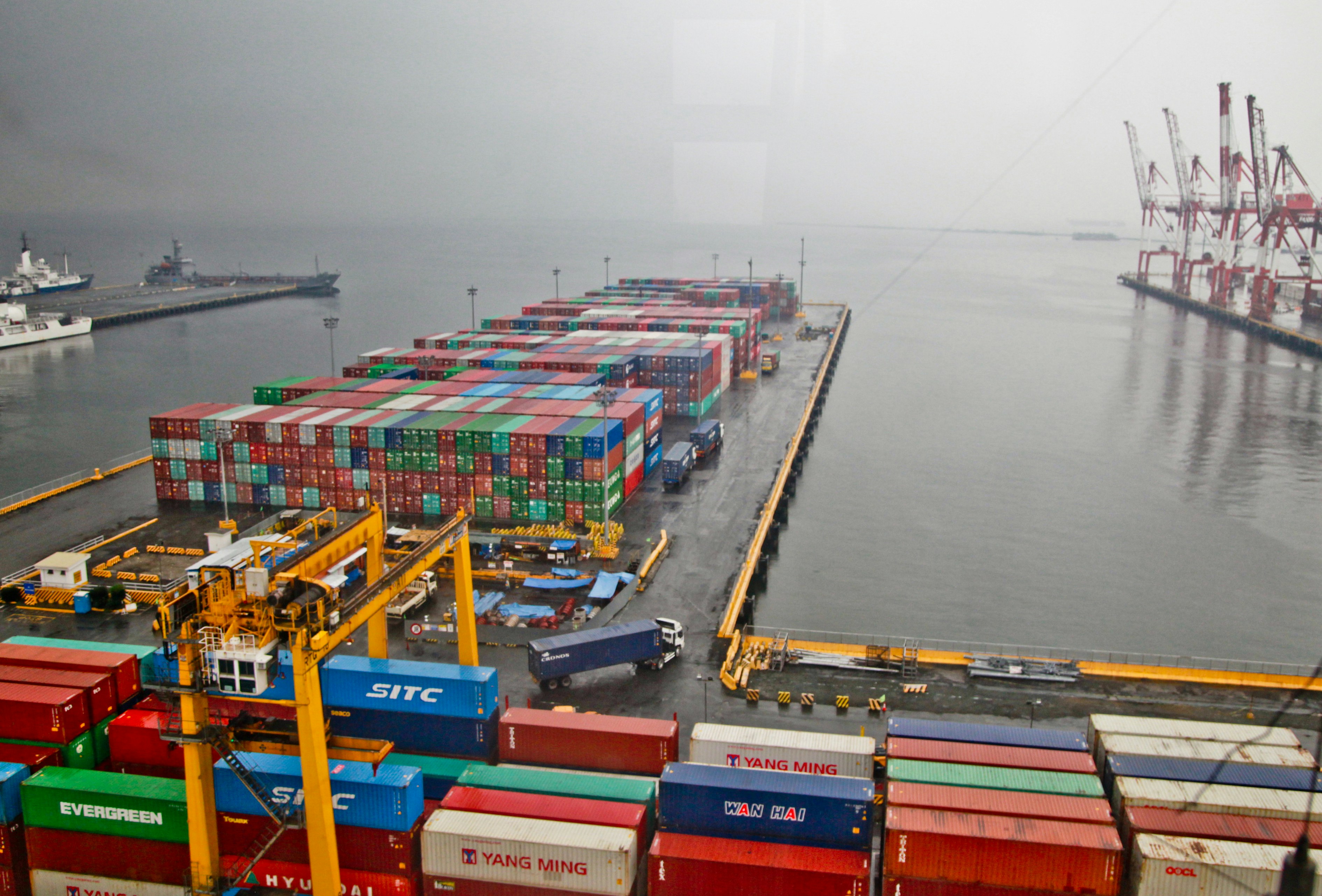Can our coastlines keep pace with change? With the advent of climate volatility, the necessity for robust coastal management for port operators has never been more pronounced, as relentless sea level rise and storm surges threaten infrastructure.
Protection is imperative.
Advanced technological solutions now play a pivotal role in reinforcing coastal resilience. Integrated systems offer unprecedented foresight, bolstering defences against the encroaching tides and turbulent weather patterns.
The Imperatives of Coastal Management
For port operators, coastal management is a critical discipline aimed at protecting vital maritime infrastructures from the erosive powers of nature. These infrastructures form the backbone of global trade and commerce, hence any compromise to their integrity can have far-reaching economic consequences. Employing a comprehensive approach to coastal management not only safeguards these assets but also fortifies the surrounding ecosystems which are integral to maintaining biodiversity and natural coastal defences.
As the frequency and intensity of extreme weather events escalates, the role of coastal management in port operation has transcended conventional boundaries. Today's strategies must be anticipatory, adaptive, and robust, capable of withstanding the uncertainties of climate change. Port operators are therefore compelled to adopt a forward-looking stance, implementing innovative technologies that can predict, mitigate, and recover from the impacts of rising sea levels and increased storm surge activity. Such proactive measures are indispensable for ensuring the long-term sustainability and operational continuity of port facilities.
Mitigating the Impact of Climate Change
Climate change poses significant risks to port infrastructure, necessitating advanced preparation and protective strategies that anticipate the unpredictable nature of environmental shifts.
Port operators increasingly turn to adaptive coastal management, utilising resilient technologies and practices designed to counter the perils of a changing climate.
Rising sea levels could displace up to 187 million people by 2100.
Facing this reality, advanced forecasting models, together with climate-resilient construction materials and techniques, have become vital in maintaining port operational integrity against the backdrop of climate change. These innovations are crucial cogs in the mechanism of sustainable port management.
Ensuring Sustainable Port Operations
Ports must anticipate environmental shifts.
Adapting to climate impacts requires a multifaceted approach. For port operators, this demands an acutely focused endeavour on adaptive and resilient coastal management strategies, designed to mitigate the risks of rising sea levels and increased storm surges. Consequently, the selection of innovative solutions that promise resilience is paramount for maintaining operations in the face of climatic adversity.
Technology has become the harbinger of adaptation.
Leveraging data is key to sustainability - as is the case with smart monitoring systems that predict and respond to imminent threats. Through real-time analysis and predictive algorithms, these systems reinforce port resilience, enabling preemptive measures against the implications of climate change.
Investment in resilience fortifies against uncertainty.
The latest technological advancements in coastal management have been particularly transformative, offering unprecedented precision in risk assessment and mitigation. Such technologies have revolutionized how ports manage the burgeoning challenges of climate change, ensuring their infrastructure's resilience and sustainability well into the future.
Adopting Innovative Barrier Technologies
Innovative barrier technologies are paramount in defending ports from catastrophic climatic events, ensuring consistent operational integrity.
As sea levels rise, novel hybrid systems like the Ocean Barrier Shield (OBS) emerge as vital protective measures, harnessing both engineering and ecological elements to safeguard port boundaries against relentless tides.
Such advanced "eco-barriers" and "bio-shields" not only provide robust protection but also contribute to marine biodiversity, thus offering a dual advantage.
Advanced Seawalls and Floodgates
Advanced seawalls and floodgates are integral, offering dynamic defense against storm surges and rising tides, thereby ensuring a port's operational resilience.
They utilize state-of-the-art materials and engineering designs tailored to each locale's specific coastal challenges.
Adaptive to environmental shifts, these structures can handle unexpected sea level fluctuations, providing long-term protection with fewer adjustments.
Seawalls now often incorporate energy dissipation features to minimize erosive forces, thus protecting the hinterland more effectively.
With real-time monitoring systems, these defenses can predict surge events, adjusting barrier positions proactively to neutralize the threat of high waters.
Ultimately, such innovations in coastal barriers represent ports' frontline defense against the changing climate, exhibiting the confluence of advanced engineering and environmental mindfulness.
Hybrid Green-Grey Infrastructure
Emerging prominently in coastal management are hybrid green-grey infrastructures, which incorporate both natural and engineered elements.
These systems marry the resilience of traditional grey infrastructure, such as seawalls, with the ecological benefits of green infrastructure, like constructed wetlands and reefs. This creates a multi-tiered defense mechanism, leveraging natural processes to enhance protection and provide ecological habitats. On the frontline, they absorb wave energy and reduce the impact on engineered structures behind, reducing maintenance needs and increasing the longevity of the coastal defenses.
Acknowledging climatic uncertainties, these hybrids are designed with flexibility in mind. They adapt over time, accommodating changes in sea level and storm patterns, which is crucial for the ever-evolving coastline. Moreover, they can often be implemented in phases, allowing for a gradual build-up and integration with existing coastal management strategies, thereby providing a scalable approach to risk mitigation.
The installation of these composite systems is a testament to innovative strategies in coastal management, aimed at balancing protection with environmental sustainability. As sea levels rise and storm surges intensify, these hybrid solutions stand as a testament to human ingenuity, bridging the gap between hard engineering and nature-based solutions. Their growing inclusion in port operations underscores the pivot towards more sustainable, long-term coastal defense strategies, prioritising resilience and the preservation of marine ecosystems.
Deploying AI for Predictive Analysis
In the dynamic arena of coastal management, Artificial Intelligence (AI) represents a pivotal advancement. Port operators are now harnessing AI's predictive capabilities to forecast environmental changes with unprecedented accuracy. These intelligent systems analyse vast quantities of data - from historical patterns to real-time inputs - enabling operators to anticipate and proactively respond to potential hazards such as storm surges or rapid sea-level rise. The integration of AI fosters a more resilient infrastructure, ensuring that ports remain operational and protected even as they face the complexities brought about by climate change.
Machine Learning for Weather Forecasting
Advancements in machine learning algorithms have revolutionised the realm of meteorology, providing port operators with highly precise weather predictions. These sophisticated models are adept at identifying nuanced patterns across a breadth of atmospheric data, outperforming traditional forecasting methods.
To elaborate, machine learning employs a data-driven approach to interpret and learn from vast climatic datasets. By processing historical weather records alongside real-time sensory inputs, these algorithms develop predictive capabilities. Their refined accuracy aids port operators in orchestrating maritime logistics, minimizing risks related to unexpected meteorological conditions.
Indeed, these machine learning systems provide a more granular view of upcoming weather scenarios. Increased computational power paired with innovative algorithms means forecasts are refined more frequently, enhancing response effectiveness to imminent weather threats. This dynamic ensures ports operate optimally by integrating tailored meteorological insights into strategic planning.
Moreover, as climate change escalates the frequency of extreme weather events, robust machine learning forecasts become indispensable tools. Proactive adaptation to anticipated conditions mitigates potential disruptions and damage, safeguarding port infrastructure and operations. This strategic application of cutting-edge technology is essential to maintaining the safety, efficiency, and sustainability of maritime hubs against an ever-changing global climate landscape.
Smart Modelling of Coastal Erosion
Coastal erosion is a significant threat to port infrastructure, necessitating advanced predictive modelling.
- High-resolution topographic data collection utilizes drones and LiDAR technology to accurately map coastal morphology.
- Predictive analytics algorithms assess potential erosion patterns informed by historical and real-time data.
- Dynamic simulation models like Delft3D and XBeach anticipate erosion under various scenarios, including extreme weather events.
- Integrated coastal zone management tools align erosion forecasts with port planning and operational strategies.
- Real-time monitoring systems employ satellite imagery and sensor networks to track shoreline changes and inform immediate action.
Advanced modelling enables ports to implement effective erosion mitigation strategies proactively.
Coupling these technologies with sustainable coastal engineering solutions is key to long-term resilience.
Investing in Monitoring and Response Systems
Modern port operations necessitate advanced monitoring systems capable of providing real-time data on oceanographic and meteorological conditions. These systems, utilizing AI-driven predictive analysis and environmental sensing technologies, empower port operators to anticipate and respond to coastal changes with agility and precision.
Enhanced port resilience is achieved through the deployment of sophisticated tidal gauges, storm surge models, and early warning systems. These tools form the bedrock of an adaptive management framework essential for safeguarding port facilities from the unpredictable forces of nature.
High-Tech Surveillance of Water Levels
Real-time surveillance is crucial for monitoring fluctuating marine environments in port vicinities.
Employing AI-driven technologies, today's surveillance systems offer precision and reliability in water level monitoring.
These sophisticated systems integrate with IoT devices, providing instantaneous data feeds to port operators.
Such an integrated network allows for timely decision-making in response to sudden changes in water levels.
These technological advancements signify a leap towards safeguarded and sustainable port operations.
Rapid Deployment of Emergency Protocols
Emergency protocols must be enacted swiftly to mitigate adverse events, ensuring minimal disruption to port operations.
Crucially, these procedures rely on a robust communication infrastructure that swiftly activates response teams, delineates crisis roles and responsibilities, and disseminates crucial information. By integrating communication systems with detection technologies, ports can respond with greater speed and coordination to emerging threats. Enhanced, intelligent systems, such as automated alerts and decision support tools, play pivotal roles in these protocols—ensuring operative readiness at all times.
Subsequently, the refinement of evacuation strategies forms an essential component of emergency preparedness. Driven by predictive analytics and risk assessment models, ports can better anticipate areas of vulnerability. This predictive capacity allows for the tailored evacuation of personnel and assets, thus maximising safety and preserving infrastructural integrity in the face of imminent danger.
Lastly, the provision of training and simulation exercises is paramount for ensuring the efficacy of emergency protocols. Invoking a procedural memory response in crews helps ensure swift, accurate execution of emergency plans. Continuous improvements, based on feedback and technological advancements, enable the protocols to evolve—optimising port resilience against the unpredictable onslaught of natural threats.

Conclusion: Embracing Coastal Management for a Resilient Future
In conclusion, as climate volatility threatens our coastlines and port infrastructure, the importance of robust coastal management has never been more evident. Port operators play a crucial role in safeguarding vital maritime assets against rising sea levels and increased storm surges.
By adopting a comprehensive approach to coastal management, port operators can protect their infrastructure while fortifying surrounding ecosystems and ensuring long-term sustainability. The use of advanced technological solutions, such as predictive analysis, innovative barrier technologies, and AI-driven monitoring systems, has become paramount in anticipating, mitigating, and recovering from the impacts of climate change.
Additionally, the deployment of hybrid green-grey infrastructures, which combine natural and engineered elements, offers a scalable and sustainable approach to risk mitigation. These innovative strategies balance protection with environmental sustainability, showcasing human ingenuity and promoting the preservation of marine ecosystems.
Investing in coastal management is essential for future-ready port resilience, allowing for proactive adaptation to evolving climatic conditions. By harnessing the power of technology and embracing forward-looking strategies, port operators can navigate the complexities of climate change and ensure the continued operation and protection of their facilities.
Ultimately, coastal management innovations pave the way for a resilient future, where ports can withstand the challenges brought about by a changing climate. Through collaboration, innovation, and a commitment to sustainability, we can ensure the longevity and success of our port operations, contributing to global trade and commerce while protecting our valuable coastal resources.



